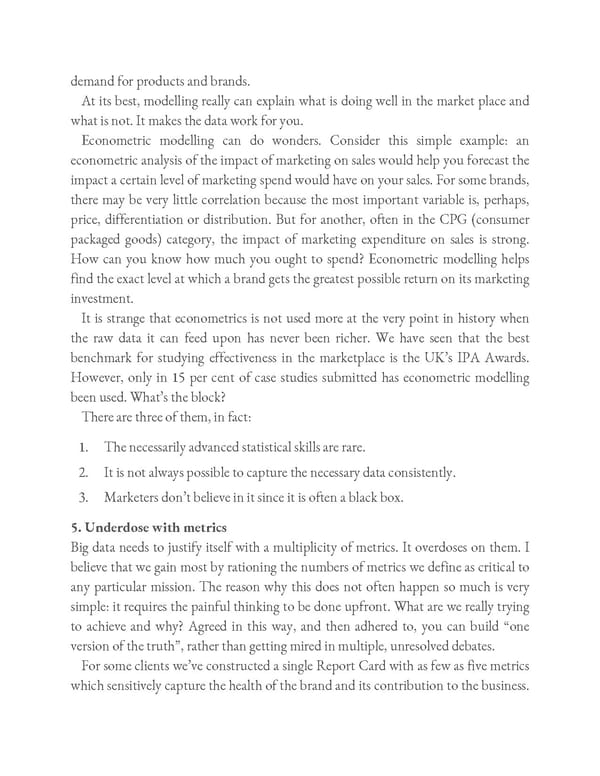demand for products and brands. At its best, modelling really can explain what is doing well in the market place and what is not. It makes the data work for you. Econometric modelling can do wonders. Consider this simple example: an econometric analysis of the impact of marketing on sales would help you forecast the impact a certain level of marketing spend would have on your sales. For some brands, there may be very little correlation because the most important variable is, perhaps, price, differentiation or distribution. But for another, often in the CPG (consumer packaged goods) category, the impact of marketing expenditure on sales is strong. How can you know how much you ought to spend? Econometric modelling helps find the exact level at which a brand gets the greatest possible return on its marketing investment. It is strange that econometrics is not used more at the very point in history when the raw data it can feed upon has never been richer. We have seen that the best benchmark for studying effectiveness in the marketplace is the UK’s IPA Awards. However, only in 15 per cent of case studies submitted has econometric modelling been used. What’s the block? There are three of them, in fact: 1. The necessarily advanced statistical skills are rare. 2. It is not always possible to capture the necessary data consistently. 3. Marketers don’t believe in it since it is often a black box. 5. Underdose with metrics Big data needs to justify itself with a multiplicity of metrics. It overdoses on them. I believe that we gain most by rationing the numbers of metrics we define as critical to any particular mission. The reason why this does not often happen so much is very simple: it requires the painful thinking to be done upfront. What are we really trying to achieve and why? Agreed in this way, and then adhered to, you can build “one version of the truth”, rather than getting mired in multiple, unresolved debates. For some clients we’ve constructed a single Report Card with as few as five metrics which sensitively capture the health of the brand and its contribution to the business.
 Ogilvy on Advertising in the Digital Age Page 225 Page 227
Ogilvy on Advertising in the Digital Age Page 225 Page 227